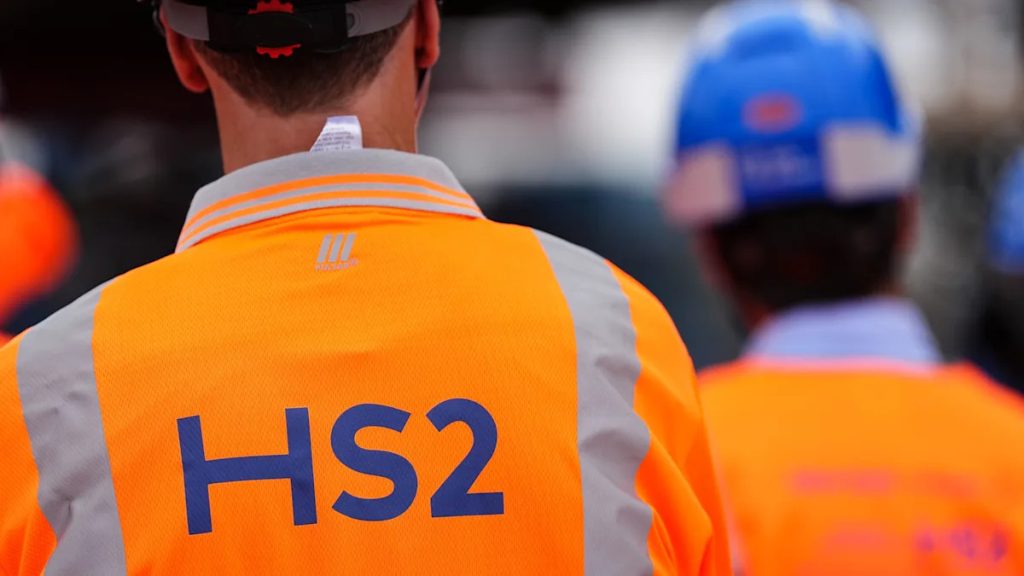Listen to the article
Recent social media claims about the underground portions of Britain’s rail infrastructure have been debunked, revealing significant discrepancies between viral assertions and actual project specifications.
A widely shared post claimed that half of the HS2 high-speed rail line would run underground, exceeding the Elizabeth line’s purported 45% underground route. Fact-checking has revealed both figures are substantially inflated.
Analysis of HS2’s first phase—now the only remaining segment after the government cancelled phase two last year—shows approximately 23% of the 140-mile (225 km) route will run through tunnels, not the 50% claimed online. The project includes 11 tunnels spanning a combined 32.55 miles (52.4 km), with five twin-bore tunnels allowing simultaneous bi-directional travel and six cut-and-cover tunnels.
Transportation experts suggest the inflated 50% figure may stem from misinterpretation of HS2’s official data. The company’s website references 65 miles (105 km) of tunnels, but this counts both legs of a round trip, effectively double-counting the infrastructure. Alternatively, the claim might incorrectly include “cuttings”—excavated sections that run below the original ground level but remain open to the sky—as underground portions.
HS2’s first phase will feature 44 miles (72 km) of such cuttings. When combined with actual tunnels, these below-ground-level sections total 76.55 miles, representing 54.7% of the route—which could explain but not justify the mischaracterization.
Regarding the Elizabeth line (formerly Crossrail), determining the exact underground portion proves challenging as most sources focus solely on newly constructed tunnels rather than the entire route’s profile. The 73-mile (118 km) Elizabeth line incorporates approximately 26 miles (42 km) of new tunnels, equating to about 17.8% of the total route running through newly constructed underground sections.
The Elizabeth line also utilizes some existing underground infrastructure, including the historic Connaught Tunnel spanning 550 meters (about a third of a mile), though this adds only marginally to the underground percentage. The widely circulated claim that 45% of the Elizabeth line runs underground appears to conflate it with the entire London Underground system, which indeed has approximately 45% of its network below ground.
These misrepresentations come amid ongoing public debate about HS2’s value and environmental impact. The project has faced intense scrutiny since the government’s October 2023 decision to cancel the northern leg to Manchester, limiting it to a London-Birmingham route and fueling criticism about resource allocation and benefits to northern communities.
Infrastructure experts emphasize that underground sections, while minimizing visual impact and preserving landscapes, significantly increase construction costs and engineering complexity. HS2’s tunneling operations alone represent billions in expenditure, including specialized boring machines and extensive geological surveys.
The Elizabeth line, which opened fully in 2022 after years of delays and budget overruns, has demonstrated the technical challenges of urban tunneling, particularly in London’s complex underground environment already crowded with existing tube lines, utilities, and archaeological sites.
These clarifications highlight the importance of accurate information in public infrastructure discussions, especially for projects like HS2 which remain controversial due to their environmental footprint and substantial public funding commitments during a period of economic constraint.
Verify This Yourself
Use these professional tools to fact-check and investigate claims independently
Reverse Image Search
Check if this image has been used elsewhere or in different contexts
Ask Our AI About This Claim
Get instant answers with web-powered AI analysis
Related Fact-Checks
See what other fact-checkers have said about similar claims
Want More Verification Tools?
Access our full suite of professional disinformation monitoring and investigation tools




9 Comments
The HS2 tunneling stats are helpful context. I can see how the 50% figure could be misconstrued from the project data. Good to have a factual breakdown on the actual underground portions. Rail infrastructure is always fascinating from an engineering standpoint.
The HS2 tunneling figures are helpful to put things in perspective. Even at 25% of the route, that’s still a massive amount of underground infrastructure. I’d be curious to know more about the geological and environmental factors they have to account for.
Thanks for the detailed breakdown. It’s good to see the actual project specs rather than inflated social media claims. Tunneling can be expensive and technically complex, so it will be interesting to see how HS2 manages those aspects.
Thanks for clarifying the actual tunneling plans for HS2. It’s good to see the facts correcting the inflated social media claims. I’m curious to learn more about the engineering and logistical considerations around building such extensive underground infrastructure.
Interesting to see the facts around the HS2 tunneling plans. While lower than some exaggerated claims, 25% is still a significant portion. I wonder how the tunneling work compares to other major rail projects in terms of scale and complexity.
Hmm, 25% underground seems reasonable for a high-speed rail project of this scale. I imagine the tunnels help mitigate environmental impact and avoid disrupting surface infrastructure. Curious to learn more about the engineering and construction involved.
Interesting to see the facts around the HS2 tunneling plans. While 25% seems lower than some claims, it’s still a significant portion running underground. I wonder what the tradeoffs and challenges are with that much tunneling work.
The breakdown of the HS2 tunneling plans is helpful in understanding the actual scale of the underground work. While less than claimed, 25% is still an impressive engineering feat. I’m curious to learn more about the construction techniques and safety protocols involved.
Tunneling is an impressive feat of engineering, even at 25% of the HS2 route. I’d be interested to know more about the specific tunneling techniques and technologies they’re using. That level of underground work must present some unique construction challenges.